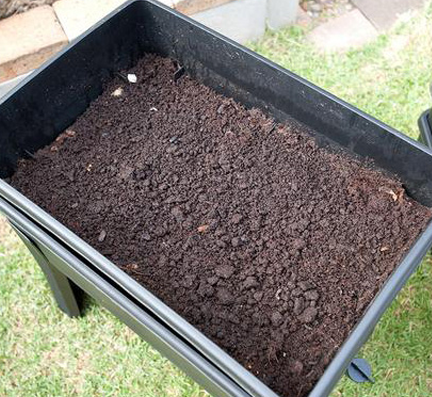- A coconut fiber bar is sunk in a container of warm water for 10 minutes, the it is drained, dried and cooled, but without twisting (NOTE: If the worms already have a bed of manure, it replaces part of the coconut fiber).
- Thread the tap of the base tray that pickups the liquids.
- Place the legs into the visible slots of the holes in the base tray.
- The perforated tray is placed on the fluid pickup base tray.
- A half coconut fiber bar a little bit wet can be spread on the base tray (and save the other half).
- About 250 g of chopped plant debris are buried in the coconut bed or manure that has been prepared.
- Add the worms.
- Place the plant remains in the first perforated tray and, when well filled, take a little of this material and spread it through the second tray, which will be placed over the first. Process must be repeated each time you add a perforated tray.
- The worms will look for food and will go to the upper levels by themselves. They will feed on the remains that have been in the composter for a long time and which are moldy.
- The top of the remains of each tray must be in contact with the tray bottom of each new tray we set, so the worms can climb up.
- When the last tray is completely full, you can pick up what you expected: the compost from the first tray, which is in contact with the collecting leachate base tray, the longest-composting and, therefore, the one with the most mature compost.
- If there are too many worms in the tray to be drawn in the ready compost, it will be appropriate to put the lower tray with the ready compost on top of all the trays in the top position, where it will get more light and where they will have easier access to the lower trays with remains ready to eat. In a couple of days our tray will be ready to get the compost and we will have another empty tray to start making compost.

